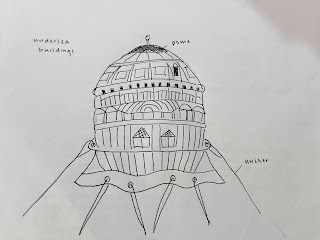w4: deep sea survival guide 4
On the land, people move by car and trains. On the sky, people move by planes. In the deep sea, people move by... YES, the submersible. It takes about an hour for a regular person to swim 2~4 kilometres, way slower than walking on a flat land. Therefore, innovative transportation methods become crucial for interconnectivity in the deep sea.
Submersible vehicles would be built with robust materials that can withstand the extreme pressure of the deep sea. To ensure the structural integrity of the submersible in extreme conditions, reinforced alloys, carbon fibre composites and advanced polymers with high strength would be used in constructing the submersible, at the same time ensuring the light weight of the submersible. Submersibles would feature a streamlined shape to reduce resistance and improve manoeuvrability in the water. This design would allow for efficient movement through the deep sea, minimising energy consumption and maximising efficiency.
The submersible would employ advanced electric thrusters powered by renewable energy sources, such as the algae-bio fuel. These propulsion systems are silent and does not emit harmful emissions, reducing noise and water pollution. Large, transparent domes will be installed on the sides of the submersible, allowing the passengers to observe the mesmerising marine life during their journeys.
Since the deep sea is mostly the same everywhere, in every direction, submersibles should be equipped with sophisticated navigation systems. GPS and sonar system would be employed in the submersibles to ensure safe navigation in the deep sea. Life support systems such as oxygen tank, temperature control and carbon dioxide removal system w.
ould be present in the submersible just in case the hulk of the submersible crashes. These safety measures ensure that in the event of an accident, passengers can safely remain within the submersibles until rescue.
Deep-sea buildings, instead of conforming to traditional architecture norms, would move with the underwater currents. This is because constructing buildings on the deep sea bed would require enormous resources to stabilise the buildings. The buildings will feature curvilinear from that mimic the contour of the ocean, reducing the resistance to currents and increasing the stability of the building. Therefore, houses in the deep sea is a a camp-van, you sleep beside a mid-ocean ridges, then wake up in the middle of nowhere.
To enhance stability of the buildings, they can be anchored to the seabed with flexible cables. While two or more buildings are in the vicinity of each other, enclosed tubes can be connected between the buildings, serving as a hallway for residence in different buildings to pass. These walkways are made of high strength PVC materials, allowing the easy installation and ensuring safe use.
While there's no underwater current, the buildings will sway gently with the movement of the water, like seaweed. However, the anti-trembling engineering techniques employed in the buildings will ensure that the residents inside experience a sense of stability. The architectural framework will absorb the forces and pressure exerted on it by the current, minimising vibrations in the interior area.


Comments
Post a Comment